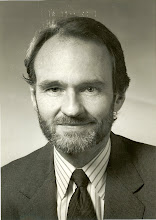The US government through the person of Hank Paulson drew the line this weekend on European-style state capitalism, forcing failing street firms to go cold turkey, calling the bluff of those who maintained that without a rescue our economy would implode. As Jeff Randall of the Telegraph put it, "In throwing Lehman to the dogs....Paulson is betting heavily that dire warnings of contagion, systematic risk and domino effect are little more than special pleading from hitherto Masters of the Universe who would like the taxpayer to save their over-priced skins."
Observers in the press today including Barron’s, the FT and WSJ agree with our earlier assessment that the trigger to all this mess can be traced to Greenspan’s mismanagement of the Fed. "The Fed kept interest rates too low for too long, creating a subsidy for debt and a global commodity price spike," notes the WSJ. "The excess liquidity and capital flows this spurred became the fuel for the wizards on Wall St who created new financial instruments that in turn fueled the housing bubble." Indeed, these seers worked out so many ways and instruments to make billions off the less-than-prime mortgage market that we could never keep up, really didn’t have a clue what they were talking about. As it turns out, neither did they.
So the purge begins. It will be painful yet it marks the beginning on the path to sobriety. Since the key problem as Paulson noted yesterday is based on housing prices which are in decline, we will see the end of the tunnel only when these prices stabilize. In the meantime, we may heed the WSJ’s suggestion for another Resolution Trust Corporation to buy, stabilize and liquidate these assets, just as the first one did during the 80's S&L crisis aftermath.
Over the next few weeks we can be more confident as taxpayers that the Treasury heard the message. We can be less confident however that the Fed has learned anything. We highlighted earlier how the Fed put us at risk in the Bear deal. Now we know that last weekend Bernanke opened the Fed lending window even further, and to institutions which are not even deposit takers, which were before not entitled to Fed largess. And in doing so the Fed now accepts all kinds of new risky collateral, including for the first time, equities in exchange for taxpayer’s credit. This is something to monitor closely in the days ahead.
Robert Craven
Subscribe to:
Post Comments (Atom)

No comments:
Post a Comment